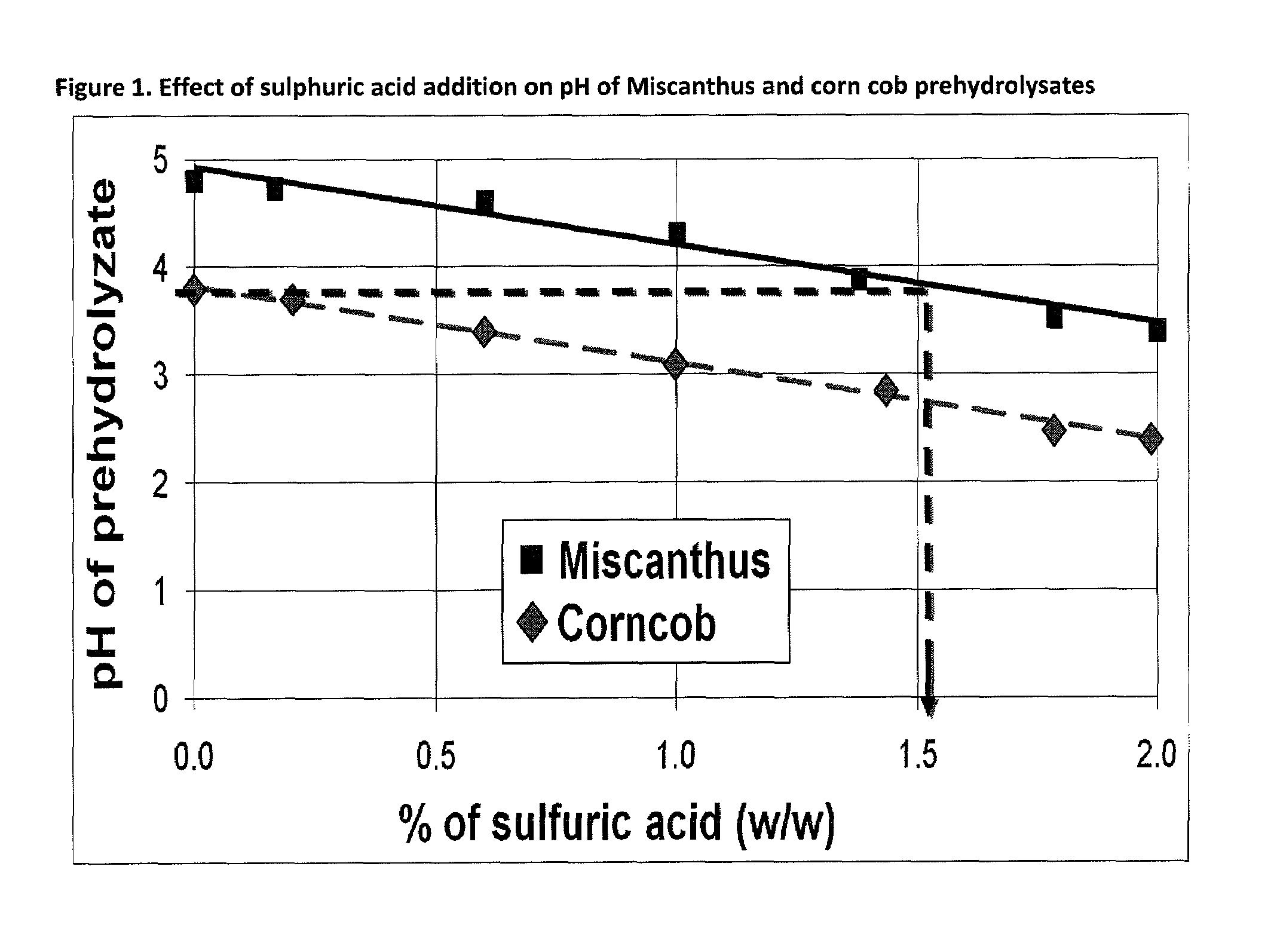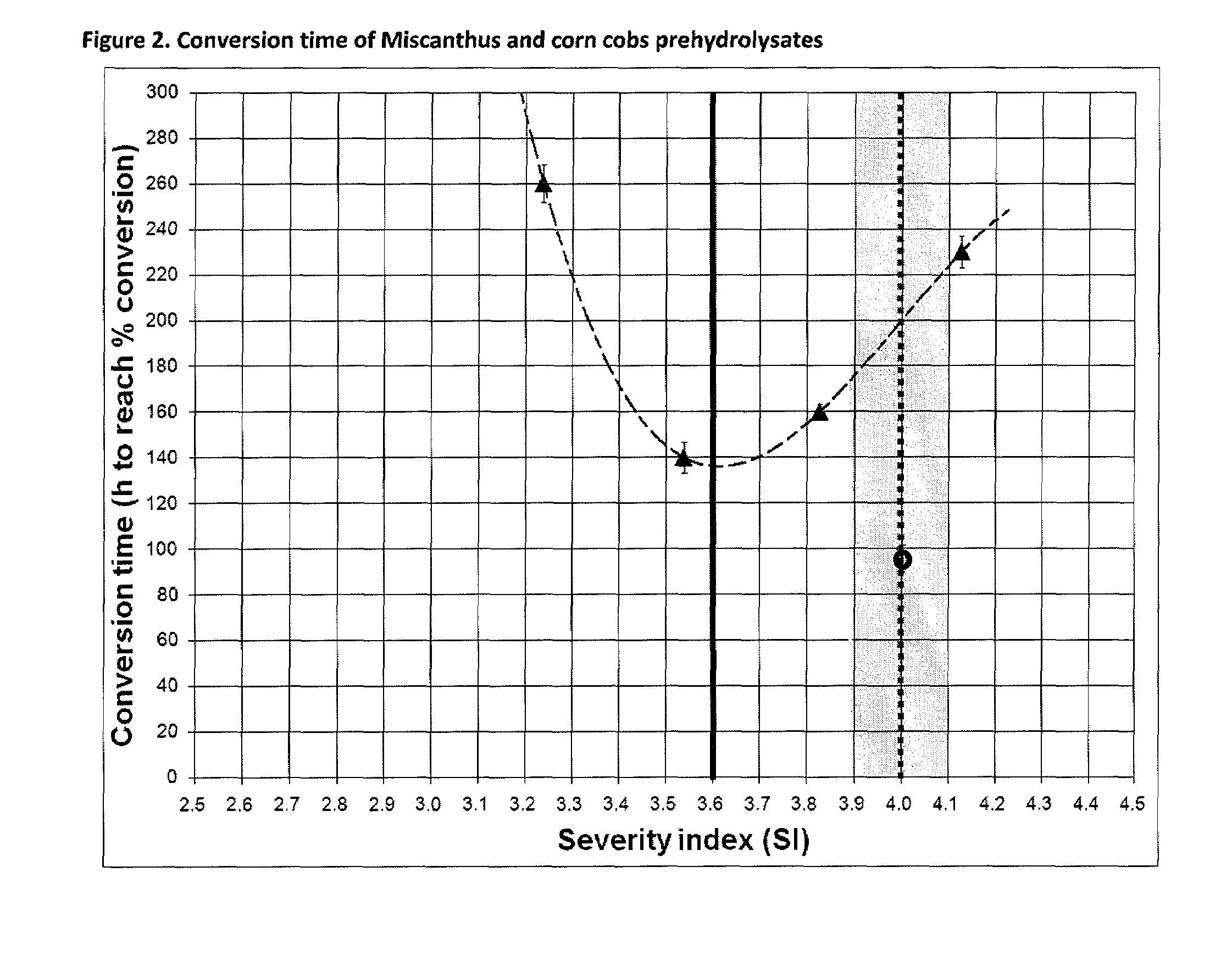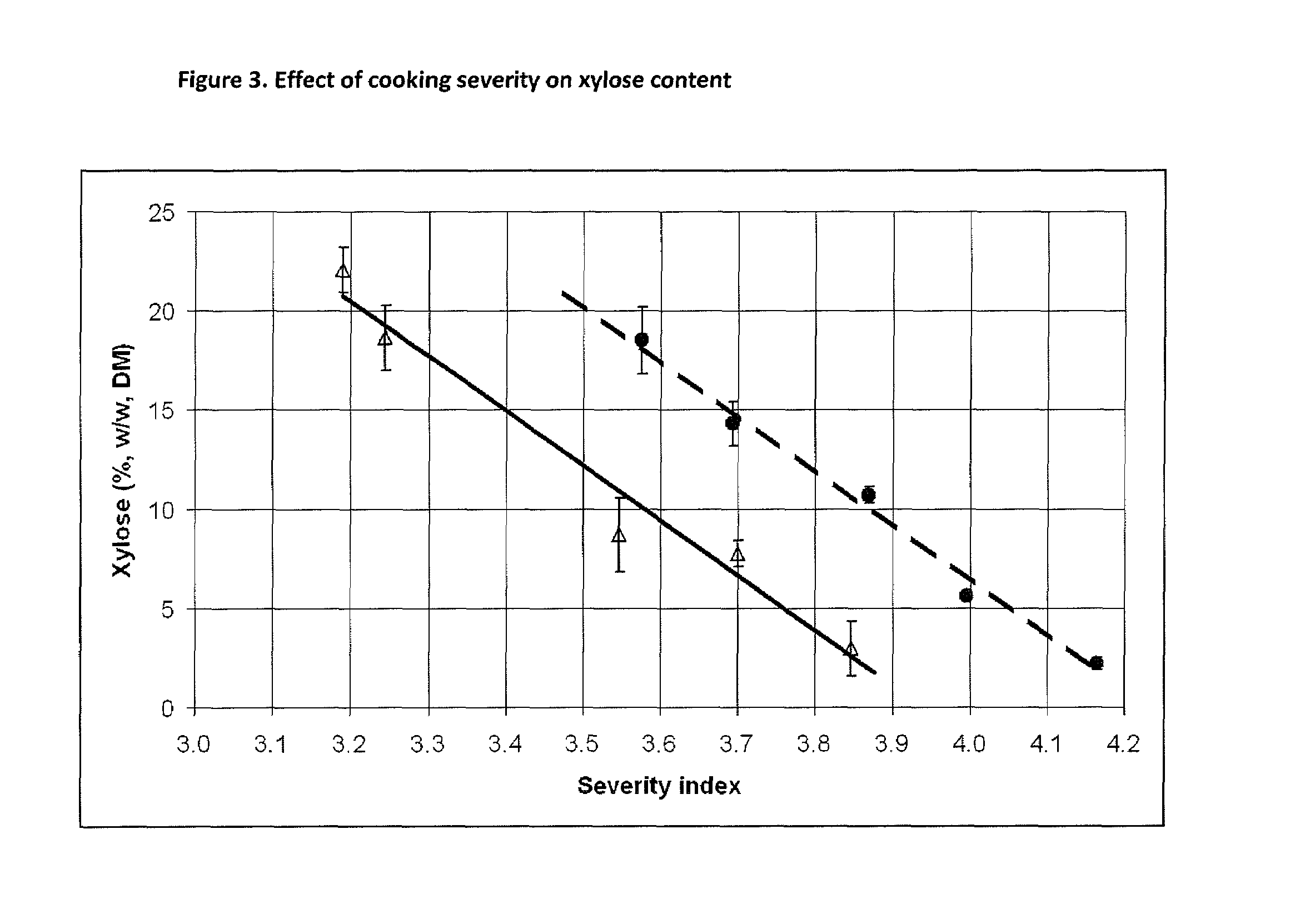Cellulose pretreatment process
a pretreatment process and cellulose technology, applied in pulp liquor regeneration, water supply installation, liquid hydrocarbon mixture production, etc., can solve the problems of poor quality land, limited availability of feedstock, and inability to grow on poor quality land, so as to avoid the use of mineral acid in the pretreatment step and reduce the amount of acetic acid in the prehydrolysate
- Summary
- Abstract
- Description
- Claims
- Application Information
AI Technical Summary
Benefits of technology
Problems solved by technology
Method used
Image
Examples
example
[0063]Batch steam explosion corncob pretreatment was carried out in a steam gun treatment process and experimental cellulose pretreatment setup as shown in FIG. 5. The setup included steam gun 100, supplied with saturated steam from a steam storage vessel 110, through valve 120 and with ground corn cobs of 0.5 to 1 cm3 particle size through a V shaped hopper 130 and screw auger 140 (from Genemco). The amount of each batch load was controlled by a weigh hopper 150. Batch loads of 6 kg corncob DM were used per steam explosion shot. Corncob weight and production rates are expressed on a dry matter basis. After filling the batch load into the steam gun 100 from above, a fill gate 160 was closed to seal the steam gun 100 to ambient. Pressurized saturated steam at temperatures of 190 to 210° C. was fed into the steam gun 100 from steam storage vessel 110, which in turn was supplied with saturated steam from a steam generator (not shown) until the desired cooking pressure was reached. Cook...
PUM
| Property | Measurement | Unit |
|---|---|---|
| pressure | aaaaa | aaaaa |
| temperature | aaaaa | aaaaa |
| pressure | aaaaa | aaaaa |
Abstract
Description
Claims
Application Information
 Login to View More
Login to View More - R&D
- Intellectual Property
- Life Sciences
- Materials
- Tech Scout
- Unparalleled Data Quality
- Higher Quality Content
- 60% Fewer Hallucinations
Browse by: Latest US Patents, China's latest patents, Technical Efficacy Thesaurus, Application Domain, Technology Topic, Popular Technical Reports.
© 2025 PatSnap. All rights reserved.Legal|Privacy policy|Modern Slavery Act Transparency Statement|Sitemap|About US| Contact US: help@patsnap.com



